Like a Sheen Caught in Headlights
The Formulation of Waterborne Polyurethane Coating Spray on Polycarbonate
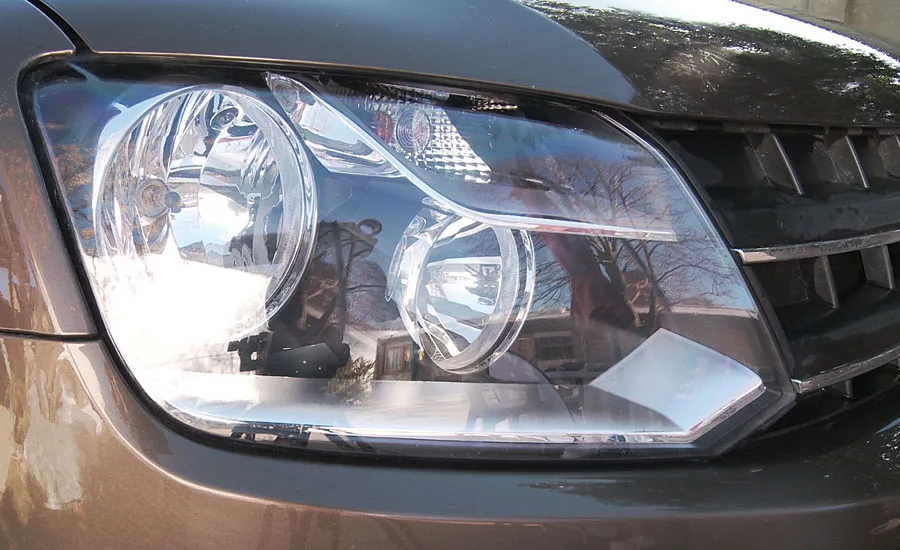
On December 11, 2018, AAA revealed that clouded or yellowed headlights (Figure 1) generate only 20 percent of the amount of light that new headlights do, leading to dangerous nighttime driving conditions. This decrease is caused by sunlight damage to protective plastic coatings, resulting in discoloration that considerably diminishes the headlight’s ability to provide adequate light on dark roadways. With 50 percent of crashes occurring at night, AAA urges drivers to check their headlights for signs of deterioration and invest in new headlights or, at a minimum, a low-cost service to boost the safety of driving after dark.
Polycarbonate (PC) is attractive as an important transparent materials due to its high impact resistance, low density, high thermal stability, excellent optical properties and so on. Therefore, PC has been used widely from small-sized optical products such as compact discs and eyewear lenses, to large-sized transparencies such as aircraft canopy and automotive glazing. However, PC exhibits low hardness, poor abrasion resistance, and poor UV and solvent resistance, which limits its applications greatly.1 Figure 2 shows the simplified chemical structure of polycarbonate.
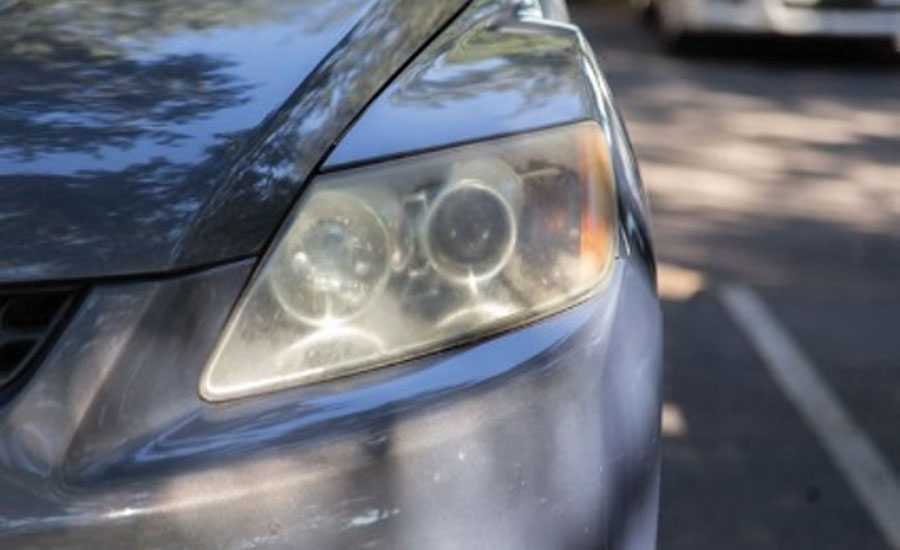
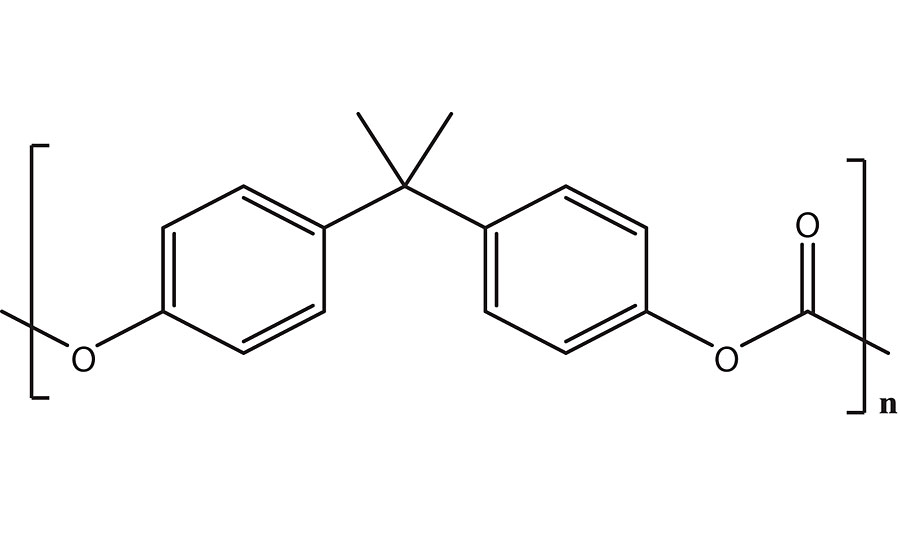
Methods for the preparation of abrasion-resistant coatings on PC substrates via a sol-gel method have been reported.2-4 But due to the surface pre-treatment and long-term stability, those sol-gel products are not pratical to use in the field. Polyurethane dispersions (PUDs) can be excellent alternativess due to their high surface hardness and excellent flexibility.5 Moreover, polyurethanes have demonstrated their ability to provide long-lasting performance on wood or plastic substrates where clear finishes are desired for aesthetic requirements. The coatings on PC substrates require abrasion, scratch and wear resistance properties, as well as excellent chemical resistance. Incorporation of alumina or silica nanoparticles on polyurethane clear coatings can improve mechanical properties, especially scratch resistance.6,7 The hindered amine light stabilizers (HALS) play an important role in the light stabilization of waterborne formulations. Due to the pH and viscosity change after addition of HALS in PUD formulation and causing the stability issue, the use of an optimized HALS and UV absorber package will be studied. The choice of additives such as nano-particle dispersions, coalescing solvents, surface wetting agents, defoamers, UV stabilizers and rheology modifiers all will affect the PUD PC coating’s performance. This article also disscuses how to directly deliver the PC coatings to auto headlight covers by using bag-on-valve (BOV) technology.
Experimental
Materials
UV stabilizers Tinuvin 123 DW (N) (HALS), Tinuvin 5333 DW (N), Tinuvin 292 (HALS) and Tinuvin 1130 (UVA-BZT) were obtained from BASF. EVERSORB 93 (HALS) and EVERSORB 80 (UVA) were provided by Everlight Chemical Industrial Corporation. Chiguard 5228 WB (nano-grade waterborne UV absorber) sample was obtained from Chitec Technology. Nano-ZnO dispersion and nano-silica dispersion were purchased from BYK. Ultrafine TiO2 (pH 8.5) was obtained from Cristal. 2-Amino-2-methyl-1-propanol (AMP) was obtained from ANGUS Chemical Company. ACEMATT TS 100 was received from Evonik. The SABIC (Saudi Basic Industries Corp) LEXAN sheet products were provided by Extech Exterior Technologies. The PC sheets were tested without any pre-treatment. The used auto headlight lamps were purchased from DFW Auto Salvage. The auto headlight cover surface was cleaned by soap and water before testing. The product comes in a can from Crown, with a cap from Cobra Plastics and BOV/actuator from Summit Packaging Systems.
Formulating Low-VOC 1K Waterborne Polyurethane Coatings on PC Substrates
Coatings for PC typically require several service performances. Typically, PC coatings must have adequate surface hardness, very good chemical and UV resistance, and excellent durability and scratch resistance to maintain an optimal appearance over their service time. For resin binder choice, several commercially available self-crosslinking PUDs were evaluated for adhesion on SABIC LEXAN sheets to determine which one had the most adhesion, film formation and gloss properties. One of the self-crosslinking PUDs with tensile strength 4,800 psi was a good choice. The melting profile of this self-crosslinking PUD was determined by differential scanning calorimetry (DSC), and is shown in Figure 3. Melting occurred at 116 °C. The glass transition temperature (Tg) should be below zero or close to zero. The resulting self-crosslinking PUD was then formulated into a 1K PUD PC clear coat, as shown in Table 1. For excellent matting efficiency combined with highest transparency, the untreated silica is included in this formula. Some typical physical properties of the 1K PUD PC clear coating are displayed in Table 2.
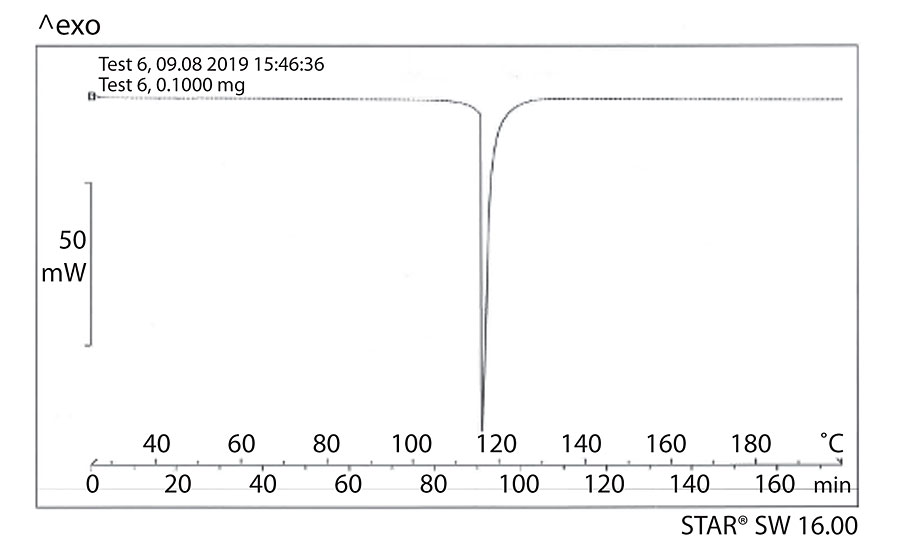
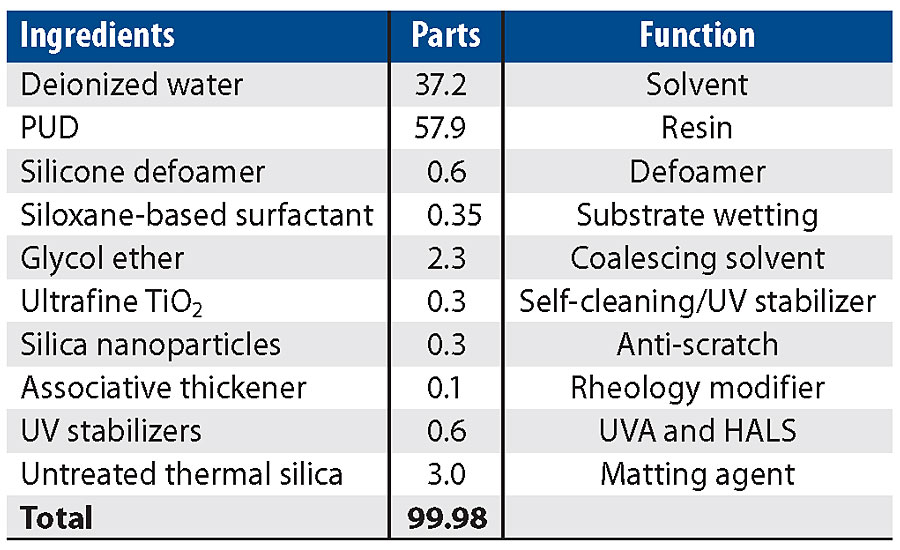
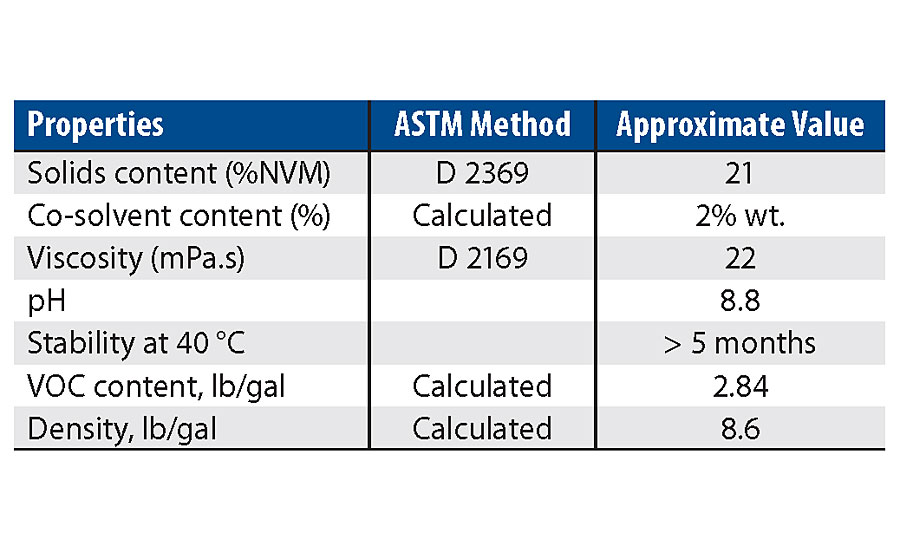
Compatibility Testing
Both clearcoat and matte finish coated on SABIC LEXAN sheet products were tested for compatibility at the SABIC Global R&D Lab. The results showed that no chemical attack was observed with the coatings after room temperature or elevated (158 °F) conditions at both 1,700 and 2,000 psi stress levels. This testing provides an indication as to the general performance of this component when in contact with the tested SABIC LEXAN sheet products at conditions similar to those used in these tests.
Flammability of Low-VOC 1K PUD Formula and BOV Aerosol Spray
The flammability of the low-VOC 1K PUD formula and BOV aerosol spray was determined by heat of combustion, flash point, flame extension and auto ignition. The results are summarized in Table 3 and show that this low-VOC 1K PUD PC clear coating is non-flammable.
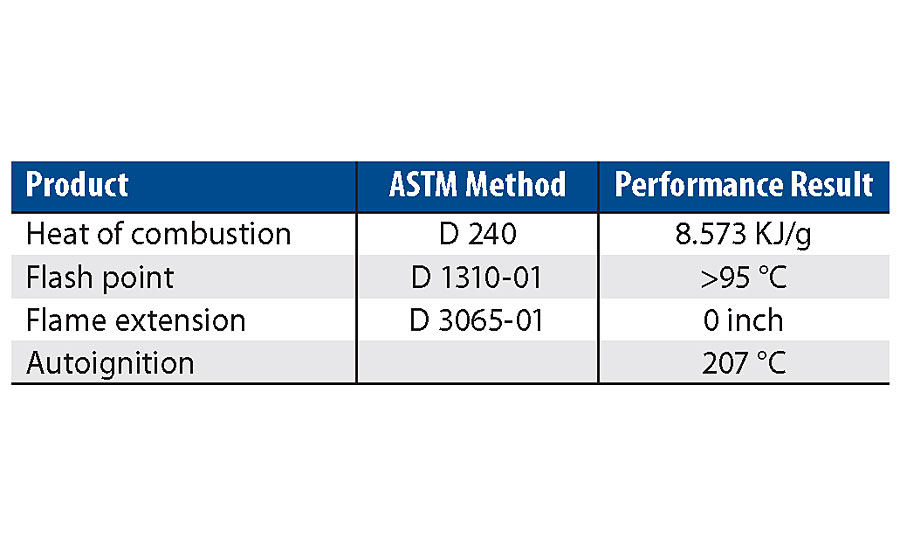
Results and Discussion
Low-VOC 1K PUD PC Coating Stability
Inorganic light stabilizer zinc oxide (ZnO) nanoparticles give excellent PC coating performance in terms of clear film formation, weatherability and scratch resistance properties. However, the addition of nano-ZnO can accelerate the self-crosslinking PUD formulation to form a gel product within a few days. Organic hindered amine light stabilizers (HALS) play an important role in the light stabilization of waterborne coatings such as PUDs. The PUDs tend to gel up or sediment with certain solvents and also when the solvent amount is low. PUDs start to gel up under heat aging if the pH drops below 8. It could be due to the interaction between HALS, which are basic, and the PUDs. If PUDs are acidic they will be less reactive. A higher-boiling AMP can be used so that the pH would be stable around 8.5 at 40 °C. However, the addition of AMP in this self-crosslinking PUD formulation still formed the gel. This is probably due to the amine compounds that formed the peroxide and regenerated hydroperoxide after thermal oxidation,8 which may cause the self-crosslinking PUD gel formation. Solvent-free, non-basic amino ether (NOR) HALS such as Tinuvin 123-DW (N) or a UVA/HALS blend such as Tinuvin 5333 DW (N) were also tested. Studies reported that the addition of nano-TiO2 can improve mechanical properties such as hardness and scratch resistance in coatings on PC substrates.9-11 Adding 1.5% concentration of nano-TiO2 to a water-based varnish showed less color change on woods as exposed to natural and accelerated weathering.12 The particle size distribution of nano-TiO2 dispersion used in this formulation can be seen in Figure 4. Table 4 shows the impact of different UV protection packages on the stability of low-VOC 1K PUD formulations. Based on the testing results monitored by pH change, viscosity and gel formation, the UV protection package in this formula includes nano-TiO2 in the combination with light stabilizers HALS and UVA. The total concentration of this UV protection package is about 0.7% on total formula weight. The light stabilizers need to dissolve in co-solvent prior to adding to the formulation.
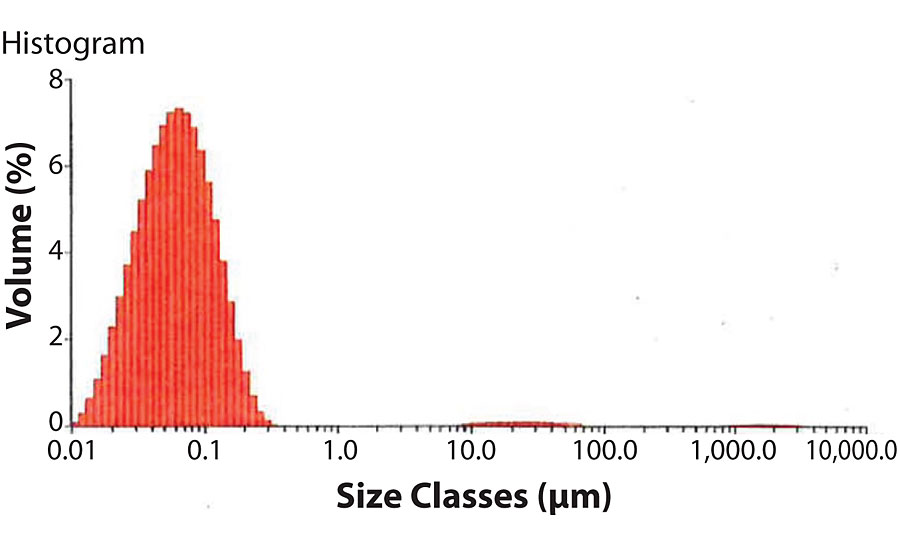
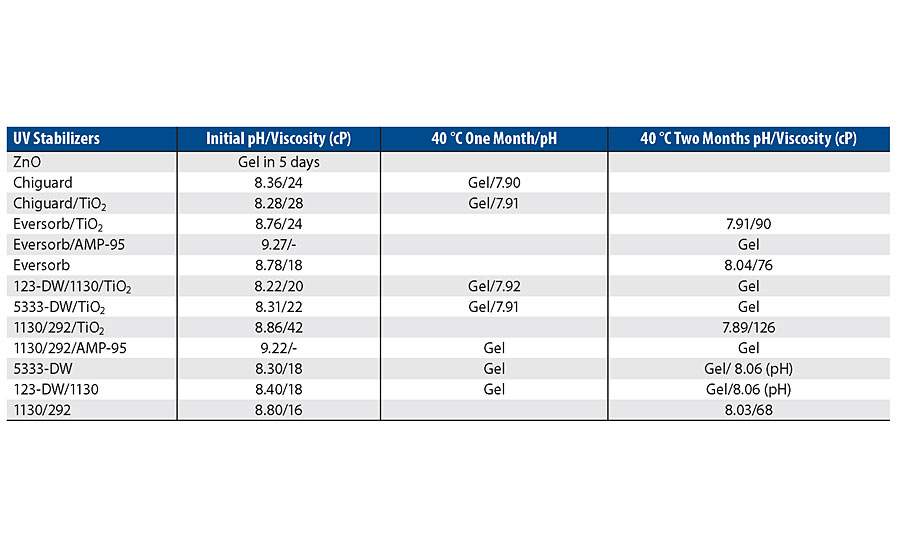
Incorporation of Nano-Silica Dispersion
In order to protect gloss on PC substrates due to scratch and abrasion, the surface-treated silica nanoparticle dispersion was included in this formula. The nano-silica dispersion exhibited high scratch and abrasion resistance without sacrificing transparency or adhesion. Figure 5 shows the particle size distribution of nano-silica dispersion used in this 1K PUD formulation.
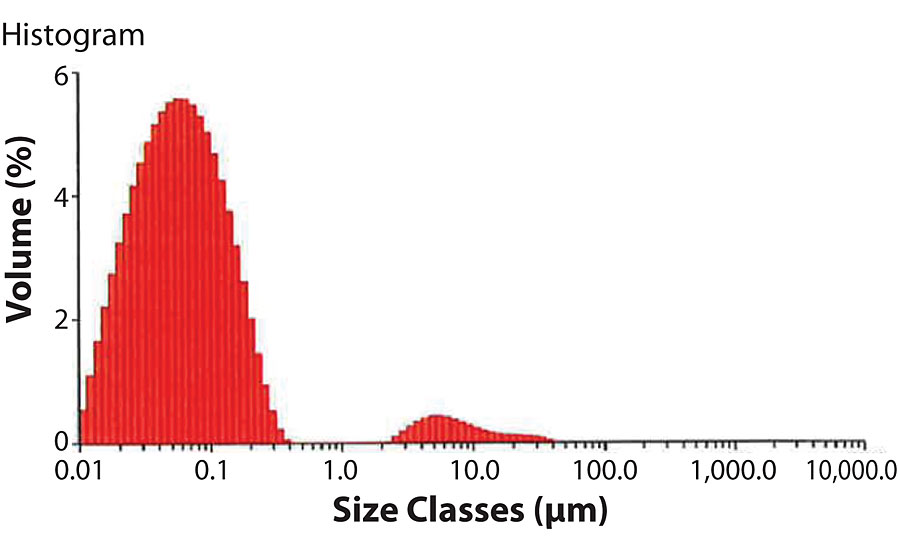
Florida Outdoor Exposure Testing
The color change, gloss loss, chalking, dirt resistance and mildew were tested according to ASTM G7 standard practice for atmospheric environmental exposure testing of nonmetallic materials. The Florida exposure results of the 1K PUD clear coat and matte finish coated on SABIC LEXAN sheets are shown in Table 5 and Figures 6-7. The Florida exposure results of the 1K PUD clear coat coated on auto headlight lamps are shown in Table 6 and Figure 8. The use of nano-TiO2 to replace some of UVA and HALS may reduce the test panels from thermal yellowing after Florida exposure. The oxidation of amines such as HALS is related to yellowing in the film.8
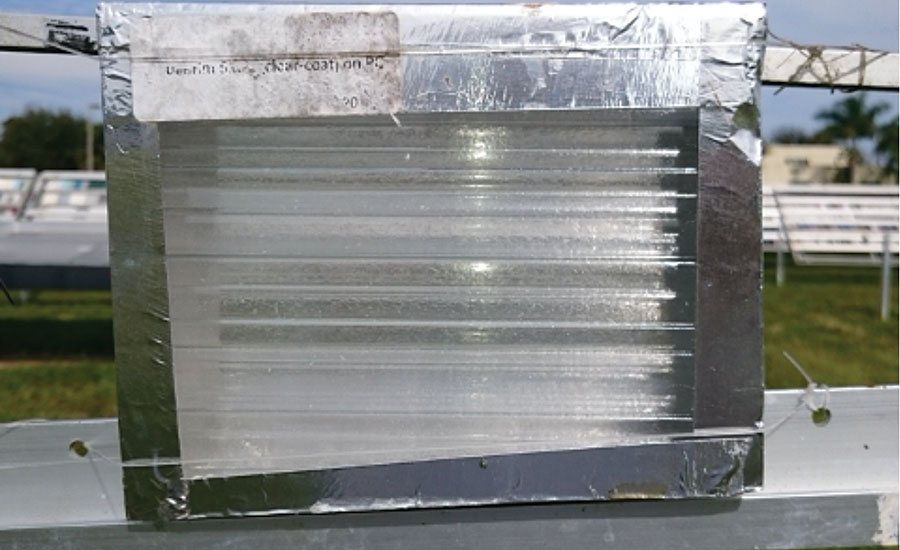
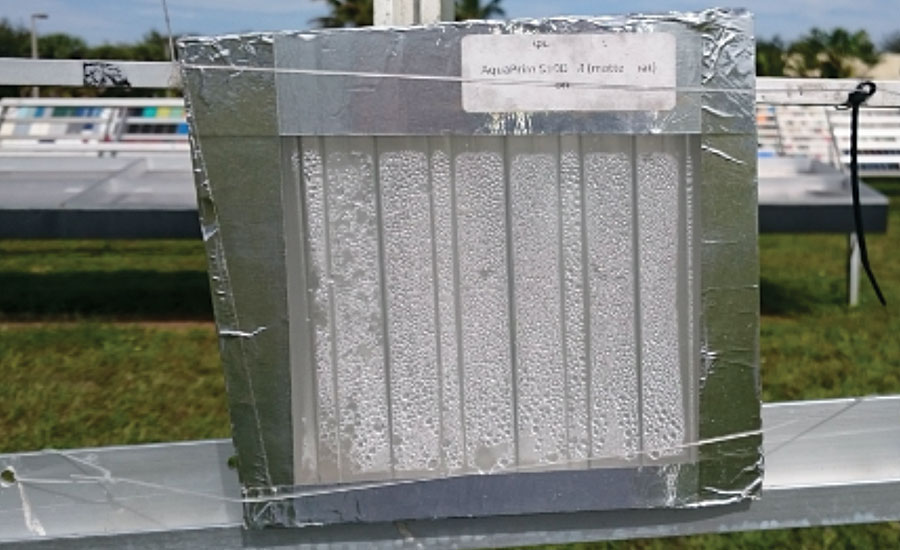
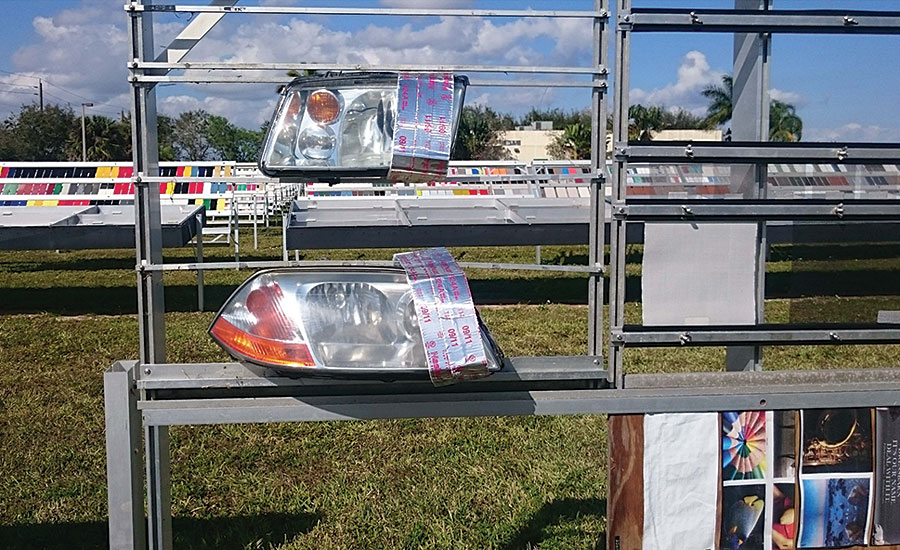
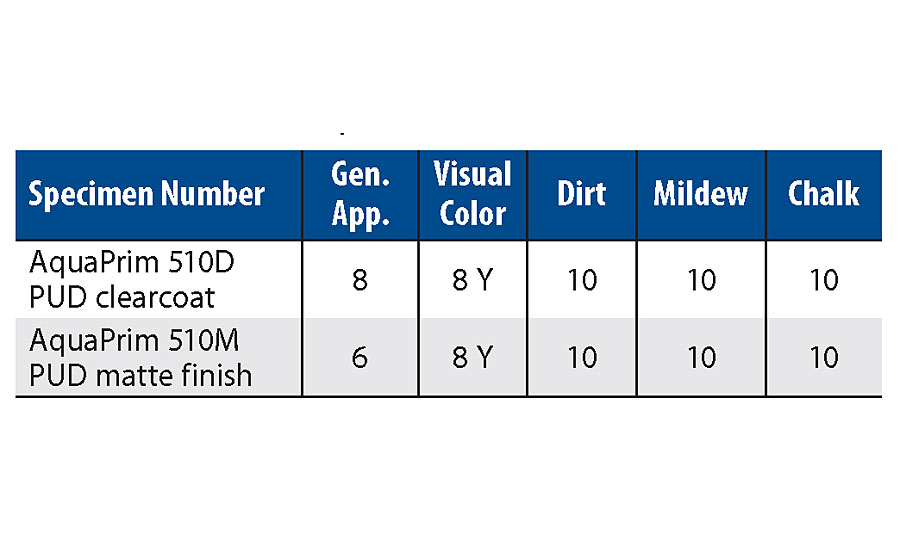
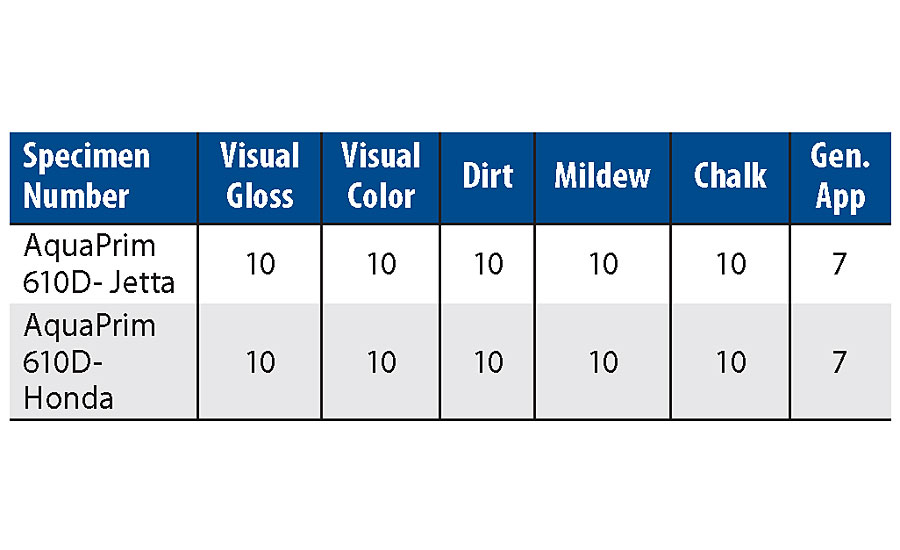
Performance Testing on Auto Headlight Lamps
The cloudy auto headlight lamps were cleaned with soap and water followed by sanding the surface to remove damage from UV light before spraying the 1K PUD PC clear coating. Table 7 shows the results of physical properties and chemical resistance of coated auto headlight lamps. This low-odor formula contains only 2% solvent and provides a quick drying time for full gloss development. Excellent waterproofing properties were observed, due to no water spots showing on dark-colored substrate. Rain did not penetrate the coating film and turn it white, even after many hours of being wet.
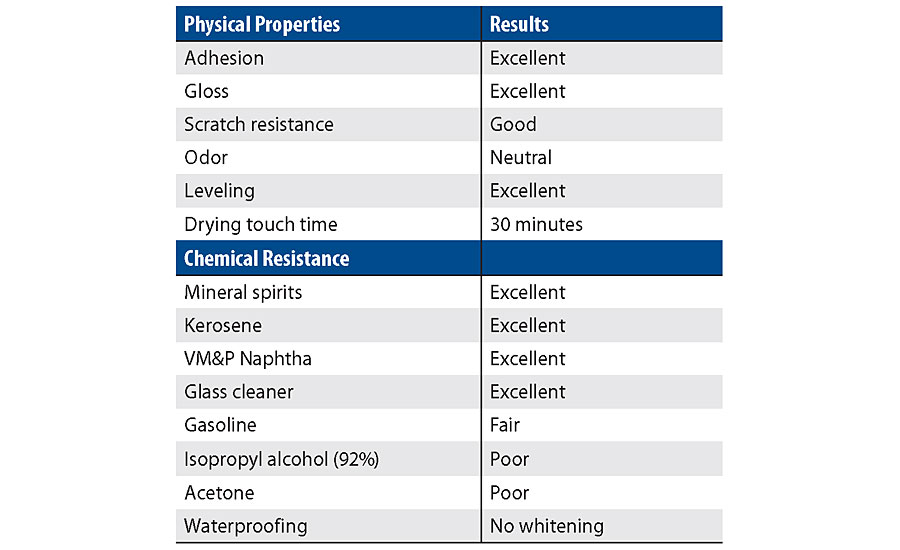
Low-VOC 1K PUD PC Clear Coating for Spray Application: BOV Technology
If the formulated product is applied directly to the surface of auto headlight lamps, the adhesion to the surface is of course a key characteristic. The BOV aerosol system is used to deliver product on the surface of the auto headlight without any bubbles or running due to the hydrocarbon propellant. The BOV aerosol system is a barrier package protecting the product from propellant and eliminating incompatibility between product and propellant, as shown in Figure 9. Thus, it helps to prolong shelf life and improve the end-user experience. BOV technology as a packaging solution minimizes product waste and contamination, helping ensure complete value for the money. Compressed air was used behind the bag. Figure 10 illustrates that the BOV aerosol average droplet particle size was 76 microns. The delivery rate was 0.6 g/s when full. Pressure when empty is 45 psig behind the bag. The 1k PUD coating that coated the auto headlight cover by this BOV coating spray is shown in Figure 11.
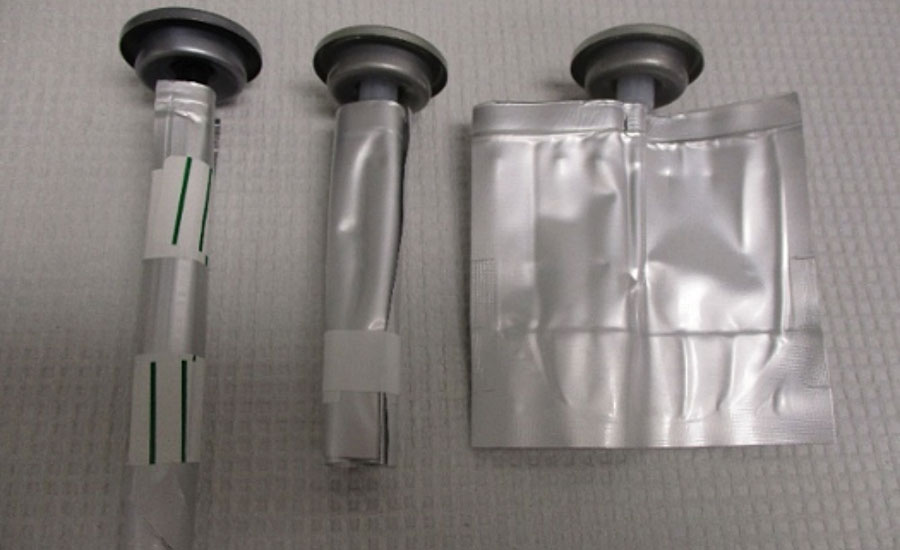
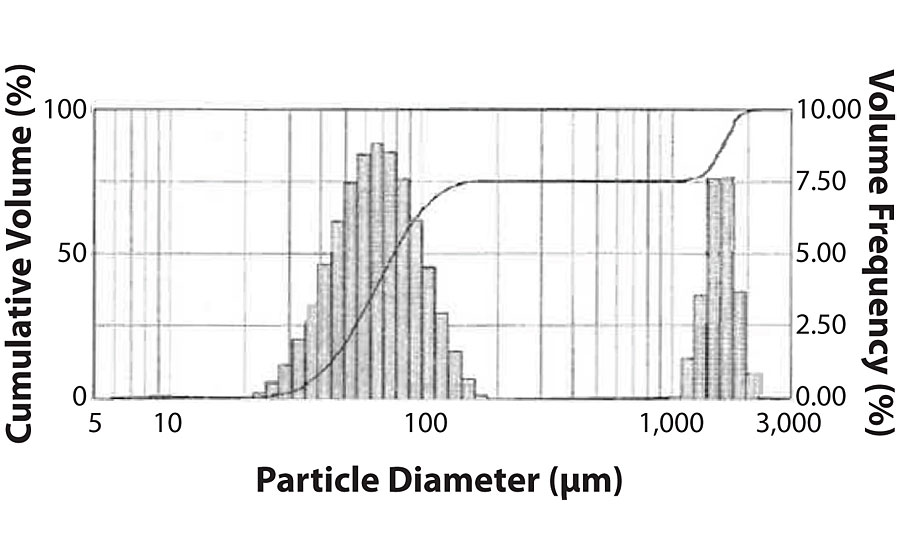
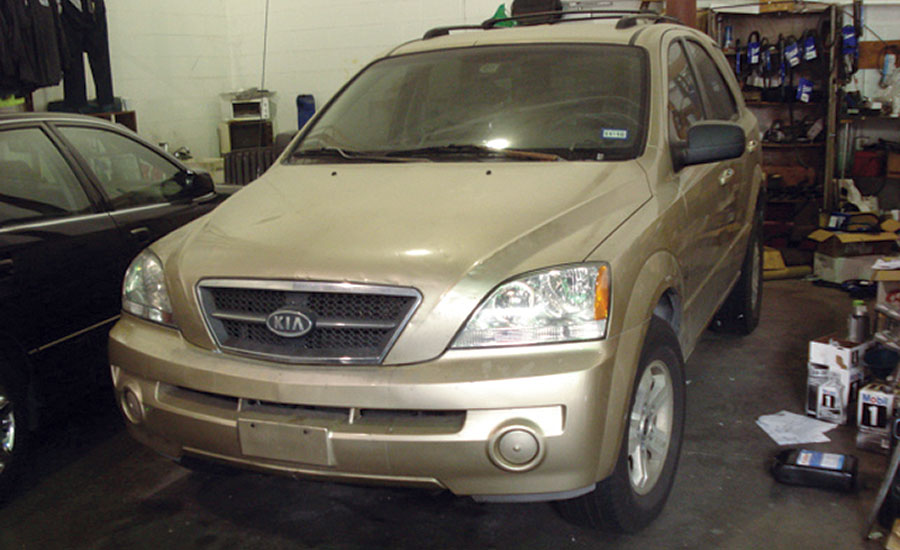
Conclusions
- The new low-VOC self-crosslinking polyurethane dispersion technology can be formulated as a clear coating for PC substrates or auto headlight covers with UV and scratch resistance properties.
- Compatibility testing results showed that no chemical attack was observed with the coatings after room temperature or elevated (158 °F) conditions at both 1,700 and 2,000 psi stress levels.
- Due to the low solvent amount in PUD formulations, the choice of UV protection packages can affect coating stability. Using the right amounts of the combination of organic light stabilizers and nano-TiO2 can achieve product stability up to five months at 40 °C storage conditions. The use of nano-TiO2 can also reduce the clearcoat yellowing caused by the oxidation of HALS amines.
- The introduction of nano-silica to the system can protect the glossy, aqueous and unpigmented clearcoat against scratching and abrasion.
- Using BOV technology as a packaging solution can eliminate incompatibility between product and propellant, and prolong the product shelf life.
- The present nonflammable self-crosslinking waterborne polyurethane formulation provides excellent chemical resistance and waterproofing properties.
Acknowledgement
The author would like to thank Dr. Aditi Chavannavar of BASF for help with the discussion of the light stabilizers used in PUD formulations.
References
1 Fabbri, P.; Messori, M.; Toselli, M.; Veronesi, P.; Rocha, J.; Pilati, F. Enhancing the Scratch Resistance of Polycarbonate with Poly(ethylene oxide)-Silica Hybrid Coatings. Adv. Polym. Technol. 27 (2008) 117-126.
2 Chen, Y.H.; Liu, L.X.; Zhan, M.S. The Preparation and Characterization of Abrasion-Resistant Coatings on Polycarbonate. J. Coat. Technol. Res. 10 (2012) 79-86.
3 Lionti, K.; Toury, B.; Boissiere, C.; Benayoun, S.; Miele, P. Hybrid Silica Coatings on Polycarbonate: Enhanced Properties. J Sol-Gel Sci Technol. 65 (2013) 52-60.
4 Eshaghi, A. Transparent Hard Self-Cleaning Nano-Hybrid Coating on Polymeric Substrate. Progress in Organic Coatings 128 (2019) 120-126.
5 Honarkar, H. Waterborne Polyurethanes: A Review, J. Disper. Sci. Technol., 2018, 39(4), 507-516.
6 Jalili, M.M.; Moradian, S.; Chen, H.; Dastmalchian, H.; Karbsai, A. Investigating the Variations in Properties of 2-Pack Polyurethane Clear Coat Through Separate Incorporation of Hydrophilic and Hydrophobic Nano-Silica. Progress in Organic Coatings 59 (2007) 81-87.
7 Clarke, M.; Paiz, A.; Brickweg, L.; Floryancic, B.; Fernando, R.H. Effects of Alumina and Silica Nanoparticles on Polyurethane Clear-Coating Properties. Chapter 11 in “Nanotechnology Applications in Coatings”, ACS Symposium Series No. 1008 (Edited by R. H. Fernando & L. Sung), American Chemical Society (2009) 210-231.
8 Campbell, D.H.; Wade, C.; Turley, K.M.; Thanki, P. Thermal Yellowing and Photobleaching of Automotive Topcoats. J. Coat. Technol. Res. 15 (2018) 131-139.
9 Yaghoubi, H.; Taghavinia, N.; Alamdari, E.K. Self-Cleaning TiO2 Coating on Polycarbonate: Surface Treatment, Photocatalytic and Nanomechanical Properties. Surface & Coatings Technology 204 (2010) 1562-1568.
10 La Russa, M.F.; Rovella, N.; Alvarez de Buerga, M.; Belfiore, C.M.; Pezzino, A.; Crisci, G.M.; Ruffolo, S.A. Nano-TiO2 Coatings for Cultural Heritage Protection: the Role of the Binder on Hydrophobic and Self-Cleaning Efficacy. Progress in Organic Coatings 91 (2016) 1-8.
11 Xu, F.; Wang, T.; Chen, H.; Bohling, J.; Maurice, A.M.; Wu, L.; Zhou, S. Preparation of Photocatalytic TiO2-Based Self-Cleaning Coatings for Painted Surface Without Interlayer. Progress in Organic Coatings 113 (2017) 15-24.
12 Moya, R.; Roderguez-Zuniga, A.; Vega-Baudrit, J.; Puente-Urbina, A. Effects of Adding TiO2 Nanoparticless to a Water-Based Varnish for Wood Applied to Nine Tropical Woods of Costa Rica Exposed to Natural and Accelerated Weathering. J. Coat. Technol. Res. 14 (2017) 141-152.
This paper was originally presented at the 2019 34th Biennial Western Coating Symposium in Las Vegas. For more information, e-mail ihsiung.wang@apollocoatings.com.
Looking for a reprint of this article?
From high-res PDFs to custom plaques, order your copy today!



